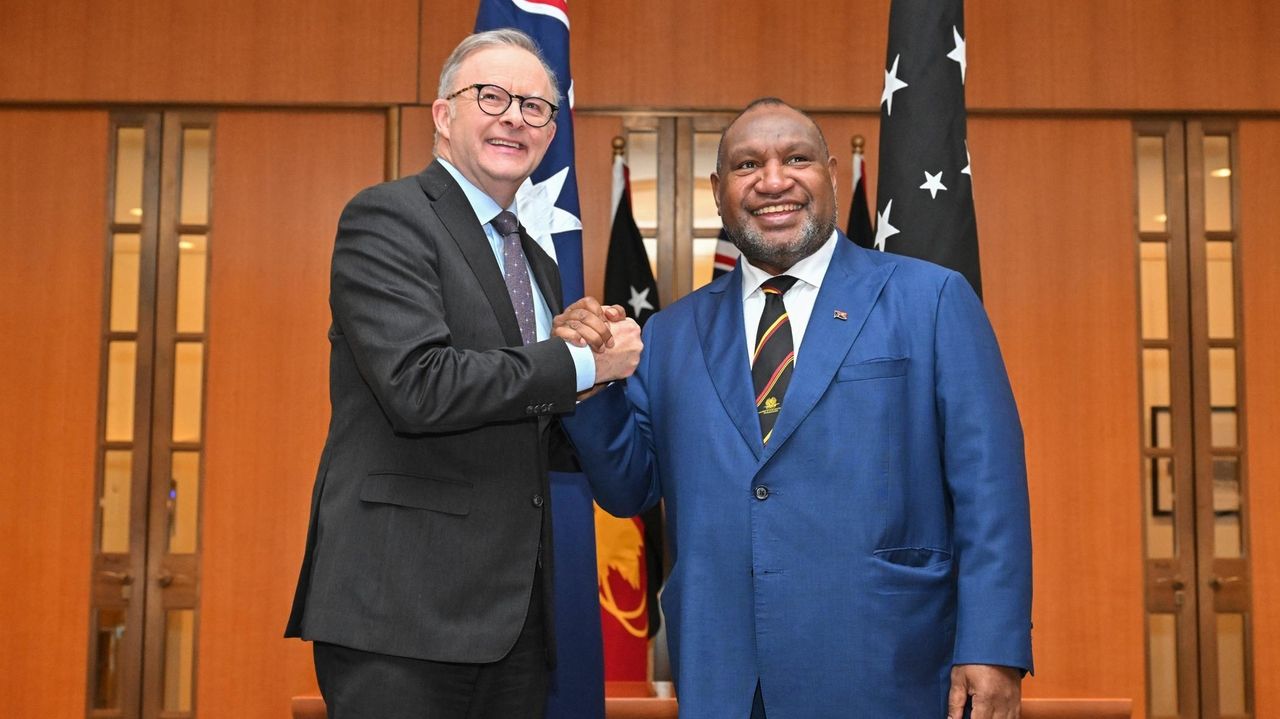CANBERRA, Australia — The Australian government signed a security pact with its nearest neighbor Papua New Guinea on Thursday that strengthens Australia’s place as the preferred security partner in a region where China’s influence is growing.
Prime Minister Anthony Albanese and his Papuan counterpart James Marape signed the agreement in Australia’s Parliament House six months later than initially planned.
The June date was abandoned after a security deal struck between the United States and Marape’s government sparked protests in the South Pacific nation in May over concerns that it undermined Papua New Guinea’s sovereignty.
Marape said the agreement with Australia respects both nations’ sovereignty and was initiated by his government.
He said the security agreements with Australia and the United States did not mean he was siding with those nations in their strategic competition against China.
“Our major foreign policy as friends to all, enemies to none remains. And it’s never picking sides,” Marape told reporters.
Albanese said both Australia and Papua New Guinea’s negotiators achieved what they wanted in the agreement.
“This is a comprehensive and a historical agreement,” Albanese said. “It will make it easier for Australia to help PNG address its internal security needs and for Australia and Papua New Guinea to support each other’s security and the region stability.”
Both governments have committed to release full details of the agreement but have yet to do so.
The agreement is less significant than the treaty-level pact proposed early in the year, but the differences are not yet apparent.
Papua New Guinea is a diverse, developing nation of mostly subsistence farmers with 800 languages in a strategically important part of the South Pacific.
With 10 million people, it also the most populous South Pacific nation after Australia, which is home to 26 million.
Papua New Guinea is a near-neighbor of the Solomon Islands where the government sent…
Read the full article here

Leave a Reply